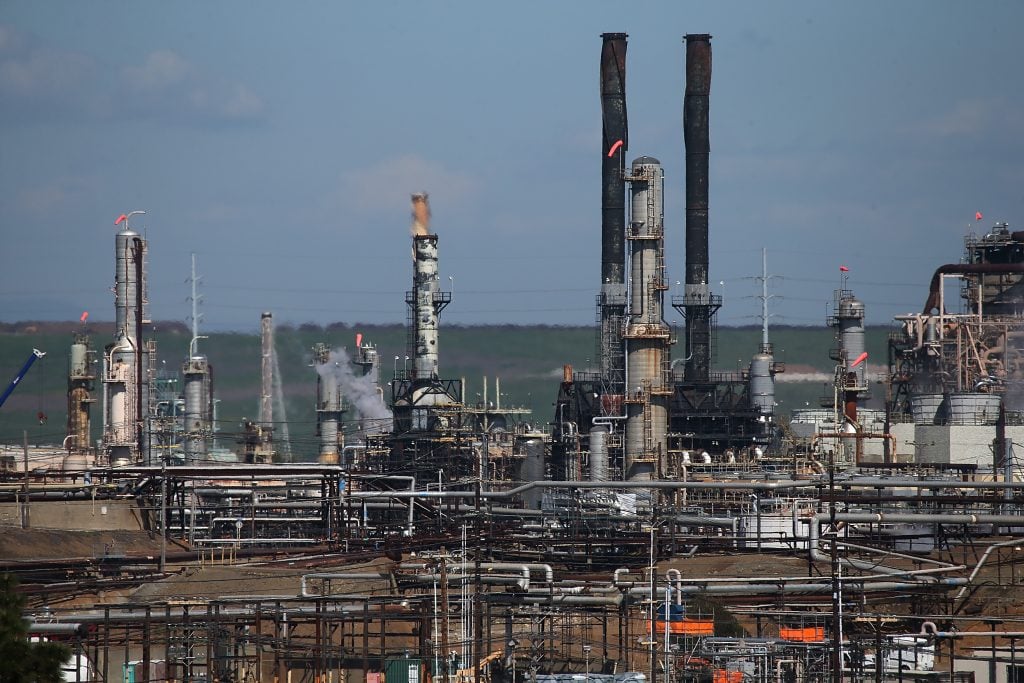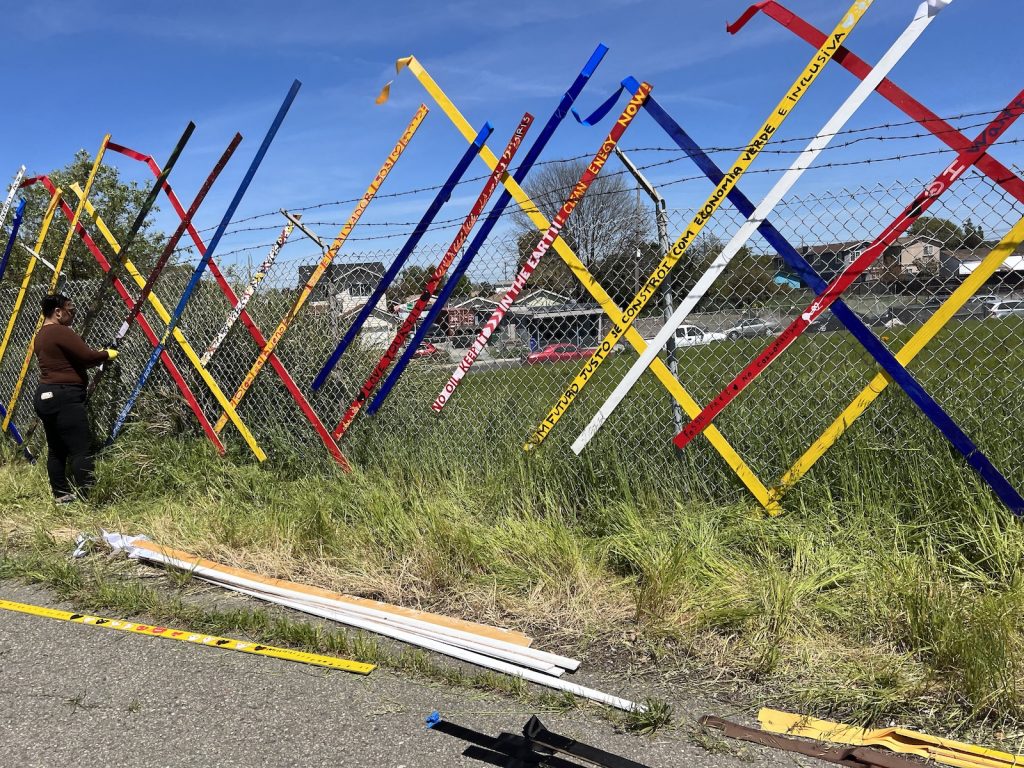Politics
Chevron Took Down an Artwork, Which Called Out the Oil Giant for Polluting a California City, From a Fence Surrounding Its Refinery
The project adorned a fence separating an oil refinery from residential neighborhoods.

The project adorned a fence separating an oil refinery from residential neighborhoods.

Brian Boucher

Oil giant Chevron has acknowledged that it removed an art installation from a fence surrounding its refinery in Richmond, California, near San Francisco.
The piece, installed on Earth Day (April 22), consisted of brightly painted slats placed on the fence around the oil refinery. Neighborhood residents were invited to inscribe messages and stories on the slats as a way of documenting the local petroleum industry’s health and environmental impacts, and form “a collective monument to resistance.” The slats were painted with messages such as “clean energy now.”
“Our fences and other company facilities are functional equipment and we cannot allow tampering or unauthorized construction,” Chevron spokesman Ross Allen told Artnet News in an email.
Organizers of the art project argue that the portions of the fence they used are owned by the city and that they received permission from Richmond’s Public Arts and Culture Commission, the City of Richmond’s Love Your Block program and Public Works Department, and Contra Costa County’s North Richmond Municipal Advisory Committee to install the work. The removal, they said, was “an attempt to silence our voices and erase our stories.”
The work was the subject of an exhibition at Richmond Art Center that ran from April 5 to June 3.
Chevron claims that the fence is the company’s private property. “Perhaps someone is mistaken about ownership of our fence and our property line, but we are quite clear about ownership of the area,” spokesman Ross Allen told Artnet News. “[N]o city permit allows construction on private property without landowner permission.”

Fencelines. Courtesy Graham Laird Prentice.
Earth Justice, a nonprofit environmental law organization, wrote on its website that Chevron’s refinery has been “wreaking havoc on the local community for decades and was the largest emitter of greenhouse gases in the state.” The residents of the surrounding neighborhood, the organization points out, are primarily people of color.
“The population in closest proximity to the refinery has disproportionately high rates of cardiovascular disease and cancer,” the Guardian reported in 2019. The city’s children have rates of asthma twice the national average, the paper reported in a story on a 2018 lawsuit the city filed against Chevron, alleging public nuisance and negligence.
“We think it’s pretty weird that they disappeared the project without any kind of communication with us,” one of the installation’s organizers, Graham Laird Prentice, told the San Francisco Chronicle, noting that there had been extensive publicity surrounding the project. The removal “seems to have transpired during the night. It’s pretty shady stuff.”